Libros by Federico Agnolin
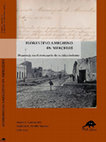
Este libro reúne los trabajos presentados en el marco de las Jornadas en conmemoración a los cien... more Este libro reúne los trabajos presentados en el marco de las Jornadas en conmemoración a los cien años del fallecimiento de Florentino Ameghino, realizadas en 2011 en la ciudad de Mercedes (Buenos Aires). Los temas abordados son una pequeña muestra de las áreas disciplinares que abordó este investigador a lo largo de su vida: estratigrafía, avifauna, arqueología, evolución; y del contexto histórico de producción. Las propuestas y teorías de Ameghino suscitaron admiradores y detractores casi por igual, y este esquema dual puede incluso rastrearse en la contribuciones que integran esta obra. El libro incluye también cuatro nuevos trabajos, que versan exclusivamente sobre diferentes formas en que Florentino Ameghino se vincula con Mercedes, ciudad en la que vivió y trabajó desde 1869 a 1877. Los artículos fueron seleccionadas bajo un estricto sistema de arbitraje que garantiza su calidad.
Papers by Federico Agnolin
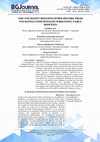
Brazilian Geographical Journal: Geosciences and Humanities research medium, 2019
ABSTRACT:
After K-P extinction, Patagonian crocodyliforms became less diverse,
and scarcer in Pal... more ABSTRACT:
After K-P extinction, Patagonian crocodyliforms became less diverse,
and scarcer in Paleogene layers. The specimen here described comes
from “Puerta del Diablo” ranch at the Natural Protected Area of Paso
Córdoba, southwestern of General Roca city (Río Negro province,
Argentina) and was found in strata from the Chichinales Formation,
Early Miocene (Colhuehuapian SALMA). MPCN-PV-174 is
represented by an isolated fragment of the posterior region of the
skull roof. This fragmentary material is assigned to an indeterminate
Crocodyliformes. Previous contributions identified the most recent
record of a crocodyliform from Patagonia as coming from the Early
Oligocene. The specimen here described indicates that
crocodyliforms were still present in the Early Miocene of Patagonia.
This suggests that suitable habitats and climate for the existence of
crocodilians were still available in northeastern Patagonia, at least.
RESUMEN:
Después de la extinción del Cretácico-Paleógeno, los crocodiliformes
patagónicos son registrados en las capas terciarias de forma menos
diversa y escasa. El especimen aquí descrito proviene de la localidad
Puerta del Diablo, Área Natural Protegida de Paso Cordoba, sudoeste
de la ciudad de General Roca (provincia de Río Negro, Argentina) y
fue hallado en capas de la Formación Chichinales, Mioceno
Temprano (SALMA Colhuehuapense). MPCN-PV 174 se encuentra
representado por un fragmento aislado de la parte posterior del techo
craneano. Este fragmentario material es asignado a un
Crocodyliformes indeterminado. Las contribuciones previas han
identificado el registro más reciente de un crocodiliforme en tiempos
del Oligoceno temprano. El especimen aquí descrito indica que los
crocodiliformes estuvieron presentes en el Mioceno temprano de
Patagonia. Esto sugiere un clima y hábitat adecuado para la
existencia de cocodrilos para estos tiempos al menos en el norte de
Patagonia
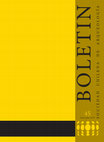
Boletín de la Sociedad Chilena de Arqueología, 2015
El registro de aves recolectadas en yacimientos arqueológicos del Noroeste de Argentina ha sido e... more El registro de aves recolectadas en yacimientos arqueológicos del Noroeste de Argentina ha sido escasamente abordado en los análisis arqueofaunísticos. En el presente trabajo se analiza y describe la avifauna colectada en el sitio arqueológico El Shincal de Quimivil, una importante instalación administrativa Inka ubicada en la provincia de Catamarca, Argentina. Entre los materiales registrados se indica la presencia de Pterocnemia pennata, Eudromia cf. E. elegans, Nothura sp., Platalea ajaja, cf. Buteo sp., Aratinga sp., Columbina sp., Zonotrichia capensis, y Saltator sp. Los taxones P. pennata, Eudromia y Nothura fueron introducidos al sitio con una finalidad de consumo antrópico. La presencia de cf. Buteo, Psittacidae, Platalea, y posiblemente Columbina se relacionaría a contextos ceremoniales, tal como fuera indicado para otros sitios arqueológicos de Sudamérica. Zonotrichia y Saltator habrían sido incluidos en la muestra de manera natural. Este conjunto constituye la avifauna taxonómicamente más diversa recolectada en algún sitio arqueológico del Noroeste Argentino.
REVISTA URBANIA N°8, 2019
Journal of South American Earth Sciences, 2018
A new anablepid (Cyprinodontiformes) from the Late Miocene of Puchuzum locality, San Juan Provinc... more A new anablepid (Cyprinodontiformes) from the Late Miocene of Puchuzum locality, San Juan Province, Argentina is described here. The collected specimens include male and female individuals showing marked sexual dimorphism and represented different ontogenetic stages. The fossils show a unique combination of characters reveals a new genus and species, Sanjuanableps calingasta. The phylogenetic analysis allowed to identify a monophyletic clade including Anableps, Tucmanableps and Sanjuanableps, which constitutes the sister group of other anablepids. During the Late Miocene, Sanjuanableps possibly formed monospecific shoals in shallow ponds of salty water in semiarid environments.
HISTORIA NATURAL Tercera Serie Volumen 4 (1) 2014/5-29
Melanophryniscus montevidensis inhabits sandy dunes along the Rio de la Plata shoreline and Atlan... more Melanophryniscus montevidensis inhabits sandy dunes along the Rio de la Plata shoreline and Atlantic coast in Uru-guay and southern Brazil. Here we report 2 specimens from different localities at eastern Buenos Aires province, Argentina, that were collected prior to the 1970s. Melanophryniscus montevidensis probably inhabited patchy sand dune environments in Buenos Aires. It is possible that the disappearance of natural environments (including dunes) in the Argentine Pampas resulted in the local extinction of M. montevidensis, a species sensitive to habitat fragmentation and anthropic modifications.
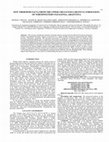
The present contribution describes theropod remains coming from the Huincul Formation (Neuquén Gr... more The present contribution describes theropod remains coming from the Huincul Formation (Neuquén Group; Cenomanian-Turonian; Upper Cretaceous) at a single locality located in northwestern Río Negro province, Patagonia, Argentina. This theropod association is composed of abelisauroids, two different-sized carcharodontosaurid allosauroids, a coelurosaur of uncertain relationships, a megaraptoran tyrannosauroid, and a possible unenlagiid paravian. Two new theropod genera and species are here described. The new carcharodontosaurid is based on an isolated postorbital bone bearing a unique prominence above the orbital brow. The new megaraptoran of uncertain affinities is described on the basis of a partially articulated tail and sacral vertebra. A new taxon is characterized by having notably elongate and highly pneumatic sacral and caudal vertebrae. It shows a large number of similarities with the African taxa Deltadromeus and Baharisaurus. These genera probably constitute a still poorly known clade of megaraptoran tyrannosauroids different from the Megaraptoridae. These findings support that Patagonia is a key place for understanding theropod evolution in Gondwana.
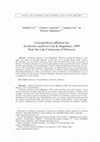
Natural History Sciences, 2012
was recently described as a new genus and species of theropod dinosaur on the basis on an isolate... more was recently described as a new genus and species of theropod dinosaur on the basis on an isolated distal caudal vertebra. The holotype and only known specimen comes from Kem Kem beds (Upper Cretaceous) of Morocco. In the present paper we review the phylogenetic position of Kemkemia and we conclude that this taxon belongs to Crocodyliformes. It shares with crocodyliforms the presence of a concavity at the posterolateral margin of neural spines, an inflated neural canal, and reduced prezygapophyses, among other traits. This combination of characters clearly distinguishes Kemkemia from theropod dinosaurs. In this way, Kemkemia is here considered as a Crocodyliformes incertae sedis, and based on the absence of unique characters, the genus and species Kemkemia auditorei is proposed as a nomen dubium. Riassunto -Affinità di Kemkemia auditorei Cau & Maganuco, 2009, dal Cretacico superiore del Marocco, con i Crocodyliformes. Kemkemia auditorei Cau & Maganuco, 2009 è stato descritto come nuovo genere e nuova specie di dinosauro teropode sulla base di una vertebra caudale distale isolata. L'olotipo e unico esemplare proviene dai livelli del Kem Kem (Cretacico superiore) del Marocco. Nel presente articolo si revisiona la posizione filogenetica di Kemkemia e si attribuisce questo taxon ai Crocodyliformes. Esso condivide con i Crocodyliformes, tra i vari caratteri, la presenza di una concavità nel margine posterolaterale della spina neurale, un canale neurale espanso e ridotte prezigapofisi. Questa combinazione di caratteri distingue chiaramente Kemkemia dai dinosauri teropodi. Alla luce di ciò, l'esemplare viene assegnato ai Crocodyliformes incertae sedis e, sulla base dell'assenza di caratteri unici, sia il genere Kemkemia sia la specie K. auditorei devono essere considerati nomen dubium.
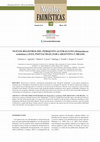
las provincias de Misiones y Buenos Aires (Argentina) y para el Estado de Minas Gerais (Brasil). ... more las provincias de Misiones y Buenos Aires (Argentina) y para el Estado de Minas Gerais (Brasil). Las observaciones aquí efectuadas podrían considerarse como registros accidentales, tratándose con certeza de aves escapadas o liberadas. A pesar de liberaciones masivas de cautiverio, esta especie aún no ha podido establecerse exitosamente en la naturaleza y su supervivencia en libertad parece ser limitada. ABSTRACT. NEW RECORDS OF BUDGERIGAR (Melopsittacus undulatus) FOR ARGENTINA AND BRAZIL. Me-lopsittacus undulatus, informaly known as the "Budgerigar" is a species original from Australia, that is currently part of the pet market. The aim of the present paper is to report new record of M. undulatus in the provinces of Misiones and Buenos Aires (Argentina) and Minas Gerais State (Brazil). Present records may be considered as of accidental occurrence, and may pertain to liberated or scaped individuals. Despite massive releases of captivity, this species has not yet been succes...
Journal of South American Earth Sciences, Jan 1, 2009
In this note we report new avian remains from the Late Cretaceous Los Alamitos Formation (Campani... more In this note we report new avian remains from the Late Cretaceous Los Alamitos Formation (Campanian-Maastrichtian) at the Los Alamitos locality, Río Negro Province, Argentina. Isolated remains referable to indeterminate Aves, ?Patagopterygiformes, indeterminate Ornithurae, cf. Hesperornithes and cf. Neornithes are described and discussed. The new genus and species Alamitornis minutus is erected to include a minute-sized and gracile bird, probably related to the non-volant ratite-like bird Patagopteryx. If correctly identified, the record of Hesperornithes may be the first for this group in the Southern Hemisphere. The Los Alamitos paleoavifauna represents one of the most diverse fossil bird assemblage from the Mesozoic of Gondwana known to date.
La historia de la introducción de la rata almizclera junto con los castores en el aquel entonces,... more La historia de la introducción de la rata almizclera junto con los castores en el aquel entonces, territorio de Tierra del Fuego, por iniciativa e la marina Argentina y con la colaboración de los biólogos del Museo Argentino de ciencias Naturales
La hisotria de la introducción de la rata almizclera en el antiguo Territorio de Tierra del Fuego... more La hisotria de la introducción de la rata almizclera en el antiguo Territorio de Tierra del Fuego, a fines de la dñécada de 1940-
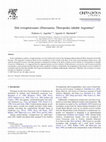
Cretaceous Research, Jan 1, 2007
In this contribution a putative oviraptorosaurian cervical vertebra discovered in the Campanian-M... more In this contribution a putative oviraptorosaurian cervical vertebra discovered in the Campanian-Maastrichtian El Brete Formation from Salta Province, NW Argentina is analysed. Based on the resemblances of this vertebra with those of the basal neoceratosaurian Elaphrosaurus and with the noasaurid Noasaurus, the Salta specimen is interpreted to belong to the third or fourth cervical vertebra of a Noasauridae (eventually Noasaurus). Furthermore, it is suggested that the supposed anterior cervical vertebrae of Masiakasaurus, Laevisuchus and Noasaurus possibly correspond to a more posterior position than previously considered. Contrary to abelisaurids, the morphology of the anterior cervical vertebrae of noasaurids indicates that they probably were long neck theropods resembling ornithomimid coelurosaurs. Therefore, the occurrence of oviraptorosaurs in Argentina is rejected.
Journal of Vertebrate Paleontology, 2012
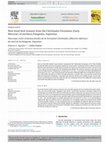
Annales de Paléontologie, 2015
Here we describe isolated avian remains coming from the Chichinales Formation, at the Paso Córdob... more Here we describe isolated avian remains coming from the Chichinales Formation, at the Paso Córdoba locality, Río Negro province, Patagonia, Argentina. Present report constitutes the first analysis of an Early Miocene bird association in South America outside the Santa Cruz and Chubut provinces, and one of the scarce reports of avian remains for the Colhuehuapian SALMA. The remains represent a new genus and species of phorusrhacid (Patagorhacos terrificus gen. et sp. nov.), a new species of rheid (Opisthodactylus horacioperezi sp. nov.), and an indeterminate charadriiform. Although different in composition, the presence and relative abundance of rheids and phorusrhacids is a pattern that is also present in other Early Miocene Patagonian assemblages, especially those from the Santacrucian SALMA. In spite of such similarities, the description of new taxa indicates that the Chichinales faunas were different to some degree from other Early Miocene bird assemblages.
Abstract: The Northern region of Buenos Aires province, in Argentina, suffered an uninterrupted i... more Abstract: The Northern region of Buenos Aires province, in Argentina, suffered an uninterrupted increase in rainfall and temperature values during the last decades. The aim of the present contribution is to analyze the effects of such climatic change in the distribution of local flora and fauna. The analysis resulted in the recognition of distributional shifts in a total of 115 species. These changes represented the progressive southern expansion of species typically present in subtropical areas. Because all these changes have a similar orientation and direction, and included a large number of plant and animals with different ecological requirements, it is here postulated that those geographical changes are probably a response to climatic alteration.




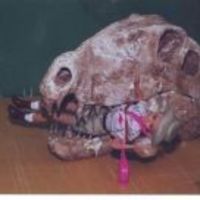

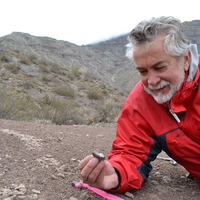
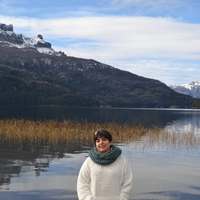
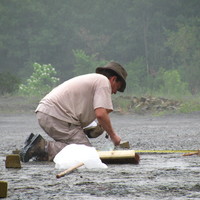

Uploads
Libros by Federico Agnolin
Papers by Federico Agnolin
After K-P extinction, Patagonian crocodyliforms became less diverse,
and scarcer in Paleogene layers. The specimen here described comes
from “Puerta del Diablo” ranch at the Natural Protected Area of Paso
Córdoba, southwestern of General Roca city (Río Negro province,
Argentina) and was found in strata from the Chichinales Formation,
Early Miocene (Colhuehuapian SALMA). MPCN-PV-174 is
represented by an isolated fragment of the posterior region of the
skull roof. This fragmentary material is assigned to an indeterminate
Crocodyliformes. Previous contributions identified the most recent
record of a crocodyliform from Patagonia as coming from the Early
Oligocene. The specimen here described indicates that
crocodyliforms were still present in the Early Miocene of Patagonia.
This suggests that suitable habitats and climate for the existence of
crocodilians were still available in northeastern Patagonia, at least.
RESUMEN:
Después de la extinción del Cretácico-Paleógeno, los crocodiliformes
patagónicos son registrados en las capas terciarias de forma menos
diversa y escasa. El especimen aquí descrito proviene de la localidad
Puerta del Diablo, Área Natural Protegida de Paso Cordoba, sudoeste
de la ciudad de General Roca (provincia de Río Negro, Argentina) y
fue hallado en capas de la Formación Chichinales, Mioceno
Temprano (SALMA Colhuehuapense). MPCN-PV 174 se encuentra
representado por un fragmento aislado de la parte posterior del techo
craneano. Este fragmentario material es asignado a un
Crocodyliformes indeterminado. Las contribuciones previas han
identificado el registro más reciente de un crocodiliforme en tiempos
del Oligoceno temprano. El especimen aquí descrito indica que los
crocodiliformes estuvieron presentes en el Mioceno temprano de
Patagonia. Esto sugiere un clima y hábitat adecuado para la
existencia de cocodrilos para estos tiempos al menos en el norte de
Patagonia
After K-P extinction, Patagonian crocodyliforms became less diverse,
and scarcer in Paleogene layers. The specimen here described comes
from “Puerta del Diablo” ranch at the Natural Protected Area of Paso
Córdoba, southwestern of General Roca city (Río Negro province,
Argentina) and was found in strata from the Chichinales Formation,
Early Miocene (Colhuehuapian SALMA). MPCN-PV-174 is
represented by an isolated fragment of the posterior region of the
skull roof. This fragmentary material is assigned to an indeterminate
Crocodyliformes. Previous contributions identified the most recent
record of a crocodyliform from Patagonia as coming from the Early
Oligocene. The specimen here described indicates that
crocodyliforms were still present in the Early Miocene of Patagonia.
This suggests that suitable habitats and climate for the existence of
crocodilians were still available in northeastern Patagonia, at least.
RESUMEN:
Después de la extinción del Cretácico-Paleógeno, los crocodiliformes
patagónicos son registrados en las capas terciarias de forma menos
diversa y escasa. El especimen aquí descrito proviene de la localidad
Puerta del Diablo, Área Natural Protegida de Paso Cordoba, sudoeste
de la ciudad de General Roca (provincia de Río Negro, Argentina) y
fue hallado en capas de la Formación Chichinales, Mioceno
Temprano (SALMA Colhuehuapense). MPCN-PV 174 se encuentra
representado por un fragmento aislado de la parte posterior del techo
craneano. Este fragmentario material es asignado a un
Crocodyliformes indeterminado. Las contribuciones previas han
identificado el registro más reciente de un crocodiliforme en tiempos
del Oligoceno temprano. El especimen aquí descrito indica que los
crocodiliformes estuvieron presentes en el Mioceno temprano de
Patagonia. Esto sugiere un clima y hábitat adecuado para la
existencia de cocodrilos para estos tiempos al menos en el norte de
Patagonia
Buenos Aires representa a una de las capitales del mundo con mayores ofertas culturales, y entre ellas, la arqueología y la paleontología son un polo de atracción de niños y adultos. La Dirección General Patrimonio, Museos y Casco Histórico llevó a cabo la Sexta edición de la Semana de Arqueología y Paleontología de Buenos Aires en noviembre de 2019. Durante estas jornadas, se realizaron diferentes actividades que fueron disfrutadas libremente por un público general.